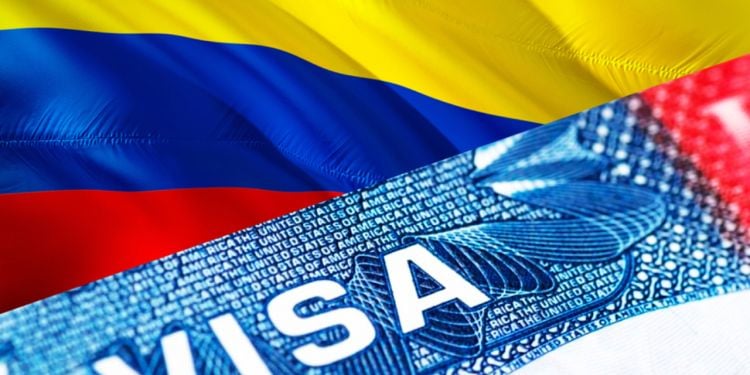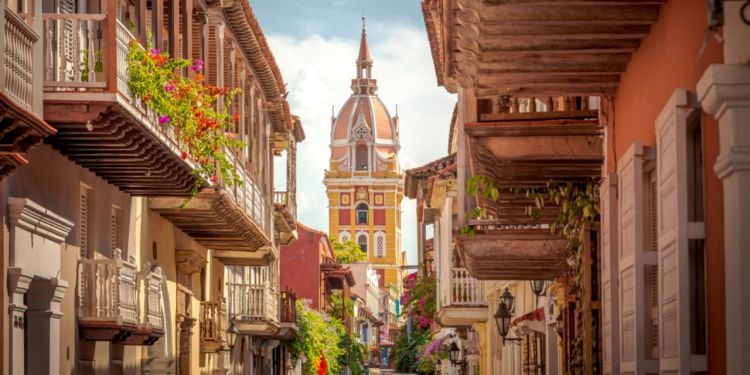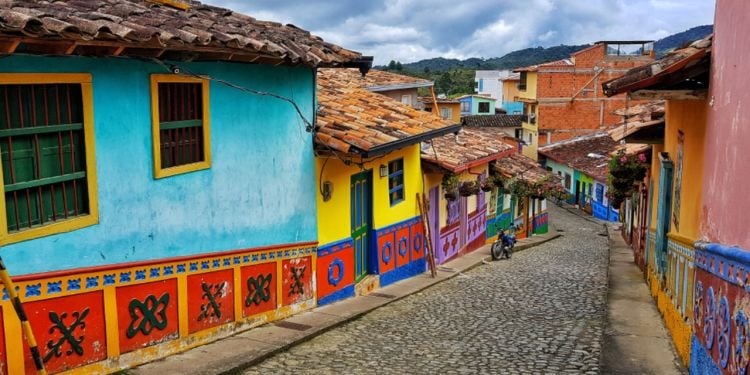Living in Colombia: the ultimate expat guide
Everything you need to know for a successful life in Colombia.
If you are looking for an authentic expat experience, Colombia is probably the ideal destination for you. Surrounded by Amazonian forests, valleys and beaches, it is can be a real adventure track for expats.
By choosing to live in Colombia, you will enjoy a dynamic and relaxed environment all at once in a tropical climate, as well as the warmth of a multiethnic population, thus enriching your expat experience.
Geography
Colombia is a country in the northwest corner of South America. It shares its borders with Panama in the north, Venezuela and Brazil in the east, and Ecuador and Peru in the south. It's the fourth largest in South America (approximately 1.1 million km²) and the only country to have both a Pacific and Caribbean coastline.
Colombia is one of 17 megadiverse countries in the world and boasts the most species of birds, endemic butterflies, and orchids. Its landscape varies widely and is divided into five different regions: the Andean mountains, the Caribbean and Pacific coasts, the Amazon rainforest, and the Orinoquia plains along the Venezuelan border.
Climate varies depending on elevation. Lower elevations (86% of Colombia's geography) are hot and humid. Temperatures range between 24°- 38°C and have distinct wet and dry seasons. Cali and Medellín are located in the temperate zone, with more moderate rainfall and temperatures between 19°-24°C. Cool zones, such as Bogotá, are located in the Andes Mountains. These areas have median temperatures between 10°-19°C and periods of heavy rainfall.
Economy
The Colombian economy has grown remarkably over the last decade and is currently the fourth largest in South America. The gross domestic product is $688 billion USD and inflation is approximately 5.8%. Income inequality is an ongoing problem and one-third of the population live below the poverty line. Major exports are petroleum, minerals, emeralds, gold, fresh flowers, and coffee.
Colombia's biggest economic challenges are inadequate infrastructure and a dependence on the global commodity market. Because of falling oil prices, economic growth slowed in 2016. However, it is projected to recover between 2017 and 2019 through increases in non-oil exports and the onset of a massive infrastructure program.
Good to know:
Colombia's currency is the Colombian Peso (COP). Current values are approximately $1USD = 3.000COP or £1GBP = 4.000COP.
Culture
Colombia's unique culture is influenced by it's indigenous, European, and African roots. Though indigenous people account for approximately 3% of the population, there are almost 90 clearly distinct groups. The diversity of Colombia celebrated each year in festivals and fairs dedicated to specific regions, music, folklore, and crafts. Famous Colombians include writer Gabriel García Márquez, sculptor Fernando Botero, singer Shakira, and actors John Leguizamo and Sofia Vergara.
Colombians have a reputation as being very friendly toward outsiders and are proud to show off the richness of their country. Family is very important and takes a central role in societal structure. It's common for children to live at home until they marry and to continue to seek advice and support from their parents. Eighty percent of Colombians consider themselves Catholic.
Demography
Colombia has a population of 48.6 million people, the second highest in South America. The majority of its population is white or Mestizo (84.2%) and Afro-Colombian (10.4%). Three quarters of Colombians live in one of six major cities. From highest to the lowest population they are Bogotá, Medellín, Cali, Barranquilla, Bucaramanga, and Cartagena.
The official language of Colombia is Spanish, although indigenous dialects are spoken in rural areas. In major cities, workers at tourist sites or big shops may speak English. However, expats planning to live in Colombia should learn Spanish in order to complete routine tasks like taking a taxi, ordering in restaurants or paying bills.
Important:
Colombia's rapid urbanization is due internal displacement. As of February 2017, an estimated 7.4 million people have been forced to leave their homes because of violence between paramilitary groups and the Colombian government. Colombia currently has the highest number of internal refugees in the world.
Government
Colombia operates as a representative democracy. The president (executive branch) shares power with the legislative and judicial branches of the government. This is done so that no one person or part of government gains too much power. It's the responsibility of the legislative branch (Congress) to write laws, the president to implement them, and the judicial branch to interpret and strike down any laws which are not constitutional.
Since the 1960's there has been an ongoing conflict between the Colombian government, left-wing guerrilla groups, and paramilitary groups. The two most well-known groups are the Revolutionary Armed Forces of Colombia (FARC) and the National Liberation Army (ELN). In 2012, the FARC began peace talks. By 2015, they had reached a cease-fire agreement with the government. In October 2016 the peace agreement was brought before Colombian voters and was rejected. The agreement was then modified, ratified in December 2016, and began implementation in 2017.
Good to know:
Colombia has 18 public holidays each year, eight of which fall between May and August.
Useful Links:
Colombia country profile
Colombia fact sheet
Colombian Embassy country overview
Information on Colombia's peace accord
Formalities
Find out more on visas, passports and entry requirements to travel to Colombia.
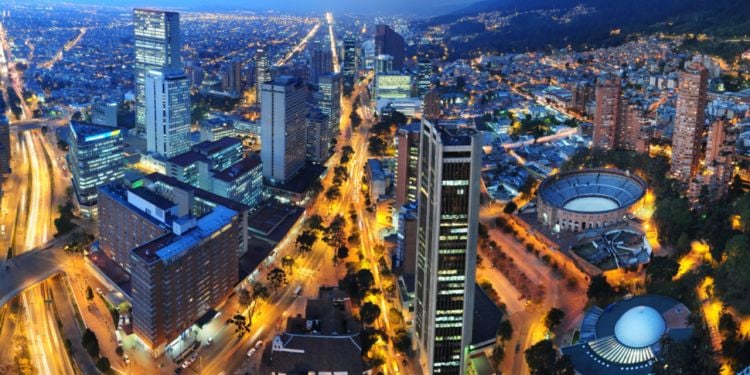
Travelling to Colombia
Foreigners visiting or moving to Colombia should research all the requirements well in advance of travel. For a short-term stay, a passport is ...
Visas
All you need to know on work visas, work permits, working holiday visas and residence permits to live and work in Colombia.
Work
Dive into the Colombia labour market, legal framework and tips on how to find a job in Colombia.
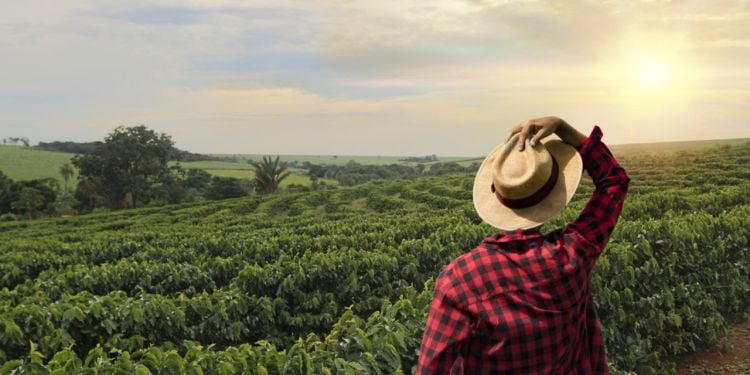
Finding work in Colombia
Though the economy in Colombia is continuing to grow, it can be difficult for foreigners to find ...

Become a digital nomad in Colombia
Located primarily in the northwest of South America (with some territories in Central America), ...

Jobs in Colombia
Discover professional opportunities in Colombia and boost your career.
Accommodation
Explore real estate or temporary rentals in Colombia. Find out more about renting or buying a house or a flat, real estate agents, leases and rental agreements.
Study
Universities, training courses, student visas, registration procedures: all you need to know about being an international student in Colombia.

Study in Colombia
Colombia is home to several of the region's top universities. In fact, Bogotá is known as the “Athens of South America” ...
Health care
Understanding the healthcare system in Colombia: public and private health system, health insurance...
Bank
Navigate the banking system in Colombia: how to choose a bank and open a bank account.
Tax
All you need to know about income tax, the tax system and filing your taxes as an expat in Colombia.

The taxation system in Colombia
Any foreigner working in Colombia is liable for taxes. The main national taxes are the income tax, the income tax for equality (CREE), the value ...
Transport
From public transports to renting or buying a car, explore the best options to getting around in Colombia.
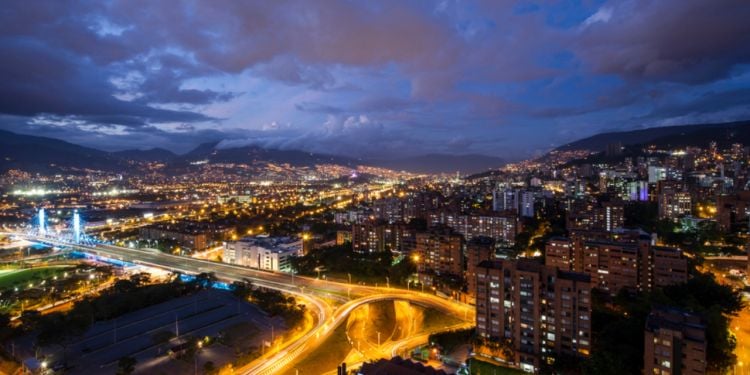
Travelling around Colombia
Most Colombians live in urban centers and do not own cars. That said, expats living in large or mid-size Colombian cities will have lots of easy ...
Driving
Essential information on driving requirements in Colombia, driver's license exchange and international permits.

How to drive in Colombia
Any foreigner entering Colombia on a tourist visa is permitted to drive with the valid driver licence from their home country. Expats living in ...
Removal
Moving to Colombia? Find useful information and tips to organize your move.
Communications
Internet and phone providers, plans, and everything you need to stay connected in Colombia.

Phones and internet in Colombia
Keeping in touch with friends and family is a top concern no matter where you are living. In order to stay in contact while abroad, you'll likely ...
Leisure
Sports, leisure, culture and other activities expats can enjoy in their spare time in Colombia.

Leisure activities in Colombia
Both visitors and those who stay long term in Colombia will have no shortage of things to do. Colombia's rich culture and diverse natural ...
Everyday life
Eager to discover what life in Colombia looks like? Here's a taste.

Childcare, family activities and education in Colombia
Family is extremely important to Colombians and many expats find it a great place to raise children. Colombia boasts access to excellent ...
Articles from the magazine
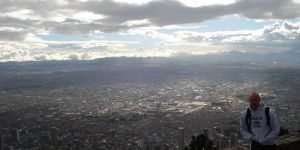
Expat Chronicles
My name is Colin and I'm an American living in Bogota, Colombia. I'd lived in Arequipa, Peru for a year when I moved here seven months ago. I like Bogota so much that I'll stay longer than the original plan of one year.

How to...Bogota
I'm Naomi, I'm from South-East London, UK, born and bred! I studied modern languages at university and am now working as an English teacher at the British Council in Bogotá, and as a freelance translator and writer on the side.
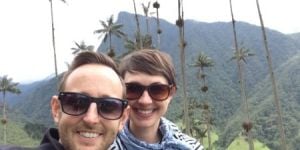
NoLongerNative
I was born in Portland, Oregon but spent 2005-2014 in San Diego, California. I moved to Colombia in May of 2014 when my husband received a two year assignment in Bogotá.
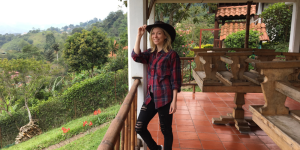
Adventures of an American in Bogotá
Sarah is originally from Maine but spent five years in New York City, where she met her Colombian husband. They decided to move together to Bogotá pending his green card approval. Fascinated by the Colombian culture, especially the music and dance as well as the hiking opportunities, Sarah talks to Expat.com about her everyday life enjoying a pleasant family-oriented lifestyle and unique cuisine.
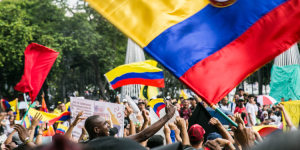
Protests in Colombia: What has happened so far
Colombia is slowly coming out of nearly two weeks of tension. The recent protests got 1,506 persons injured and 26 dead. The Colombian government and international organisations made an urgent call for peace.
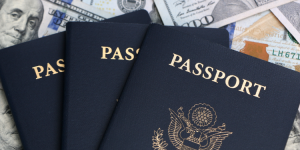
Countries that offer residence by investment
Many popular expat destinations have recently ended or restricted their Golden Visa programs, which were often criticized. However, several countries still use these programs to attract affluent foreigners. In 2025, what are the available investment programs? Can one immigrate with their family through these programs?

UK tax reform: How it affects expats
The British tax reform took effect on April 6, 2025. Notable changes include the elimination of the "non-domiciled" status and an overhaul of the inheritance tax system.

How does remote work impact professional integration?
Lately, many large companies have considered ending or significantly cutting back on remote work. This has met with pushback from employees who have adapted their lives to work from home. How can businesses balance the needs of expatriates, facilitate their professional integration, and still accommodate remote work? How does remote working impact foreign employees' connection to their company?

